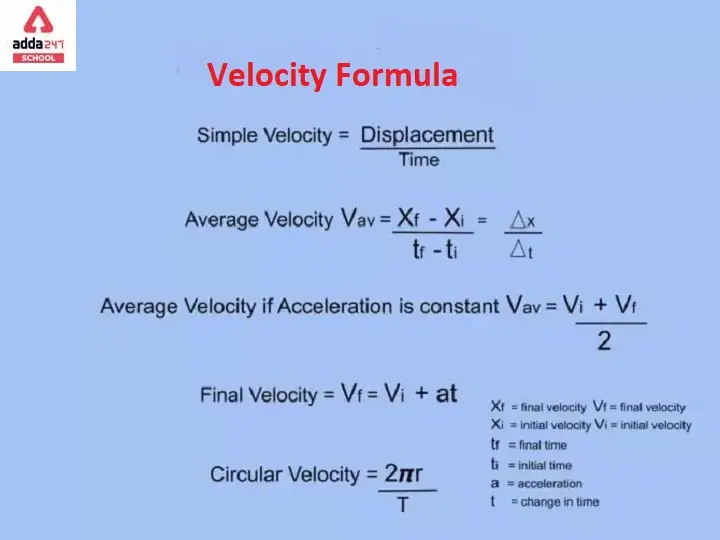Ever watched a race and wondered how fast the runners are going on average? That’s where the concept of average velocity swoops in, bringing physics into the mix. Whether you’re a physics enthusiast or just trying to figure out how quickly you can get from point A to B, understanding how to find average velocity is like decoding the speed secrets of the universe.
Do you want to how to find average velocity? Keep reading!
Table of contents
What is Average Velocity in Physics?
Average velocity in physics is a measurement that combines both the speed and direction of an object’s motion over a specific period. Unlike average speed, which considers only how fast an object is moving, average velocity takes into account the displacement (change in position) and the time it takes to cover that displacement.
It’s a vector quantity, meaning it has both magnitude (speed) and direction. In simple terms, average velocity tells you the overall rate at which an object is changing its position, considering the path it takes.
You should read: How Big is 5 Inches? 6 Items with Accurate Measurement
How to Find Average Velocity?
Finding average velocity involves calculating the total displacement of an object and dividing it by the total time taken to cover that displacement. Here’s a step-by-step guide on how to find average velocity:
Step 1: Determine Initial and Final Positions:
Identify the initial and final positions of the object. These positions could be given in terms of coordinates, distances, or any other measurable units.
Step 2: Calculate Displacement:
Find the displacement by subtracting the initial position from the final position. If the motion is along a straight line, this is a simple subtraction; if it’s two-dimensional, use vector subtraction.
Step 3: Determine Time Interval:
Determine the total time it takes for the object to move from the initial to the final position. This could be given directly or calculated by finding the time difference between the start and end of the motion.
You should read: How Big is 5 Inches? 6 Items with Accurate Measurement
Step 4: Apply the Formula:
Use the formula for average velocity: Average Velocity=DisplacementTime IntervalAverage Velocity=Time IntervalDisplacement
Step 5: Include Direction:
Since average velocity is a vector quantity, don’t forget to include the direction. Indicate whether the object moved north, south, east, west, or at an angle.
Step 6: Units:
Express the average velocity in appropriate units. If the displacement is measured in meters and the time interval in seconds, the average velocity would be in meters per second (m/s).
Example:
If a car travels 100 meters east in 20 seconds, the displacement is 100 meters (east), and the time interval is 20 seconds. Applying the formula: Average Velocity=100 m20 s=5 m/s eastAverage Velocity=20s100m=5m/seast
By following these steps, you can calculate the average velocity of an object’s motion and understand both its speed and direction.
Check out this related content: Is 75 Degrees Really Hot? (Explained)
What Units are used for Average Velocity?
The units for average velocity are typically expressed in distance units over time units. The SI (International System of Units) unit for distance is the meter, and the unit for time is the second. Therefore, the standard unit for average velocity is meters per second (m/s).
In some cases, you might encounter different distance units, such as kilometers or miles, and time units like hours or minutes. In such cases, you would adjust the units accordingly to maintain consistency. For example, you might express average velocity in kilometers per hour (km/h) or miles per hour (mi/h) if the distances are given in kilometers or miles, respectively, and the time is given in hours. The key is to make sure the units for distance and time match appropriately for the calculation.
Check out this related content: Is 75 Degrees Really Hot? (Explained)
Conclusion
Calculating average velocity may sound like diving into the depths of physics, but once you grasp the concept, it becomes a powerful tool for understanding motion.
Whether you’re tracking a sprinter or navigating the physics of your daily commute, finding average velocity adds a dynamic layer to your perception of speed. So, gear up, physics enthusiasts, and let’s keep those calculations moving!
Frequently Asked Questions
Average velocity is a measure of the overall displacement of an object over time. It’s not just about speed; it considers the direction of motion, making it a vector quantity.
To calculate average velocity, you divide the total displacement of an object by the total time it takes to cover that distance. It’s the change in position divided by the change in time.
Yes, it can. If an object moves in a round trip and returns to its starting point, the total displacement is zero. Dividing this by the total time results in an average velocity of zero.
Average speed only considers the magnitude of motion, while average velocity considers both magnitude and direction. Velocity is a vector quantity, and speed is a scalar quantity.
The units for average velocity are typically expressed in distance units over time units. For example, meters per second (m/s) or kilometers per hour (km/h) are common units for average velocity.
References
- study.com– How to Find Average Velocity
- study.com– How to Find Average Velocity- of an object graphically explanation
- byjus.com– How to Find Average Velocity
Recommendations
- 26 Legitimate Ways to Get a Costco Student Membership for Free
- What Age Do You Graduate High School?
- Which Group is a Primary Supporter of Hunter Education?
- How Tall is Trippie Redd? Everything About the Rapper
- How Tall is Jack Skellington? All the Facts and Details
- How Big is 5 Inches? 6 Items with Accurate Measurement






